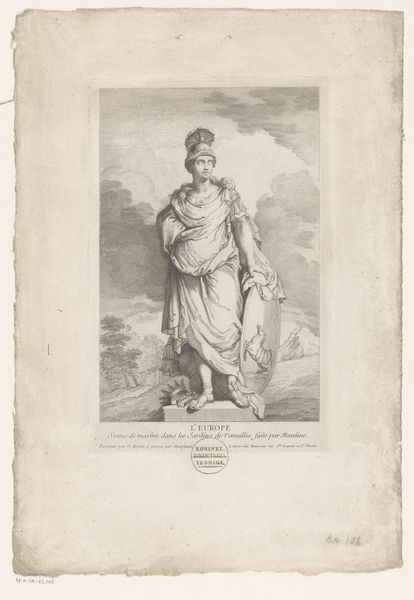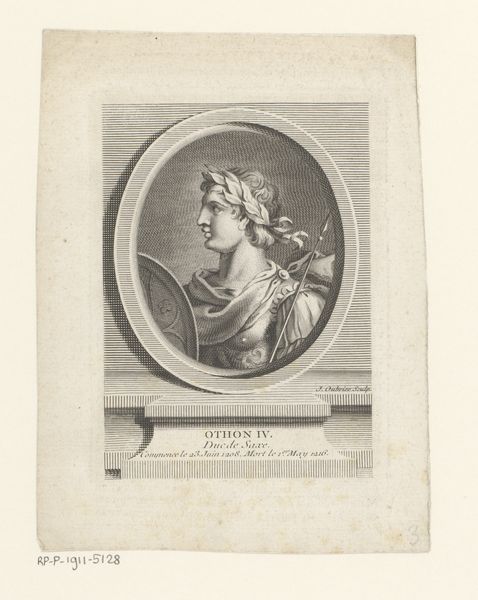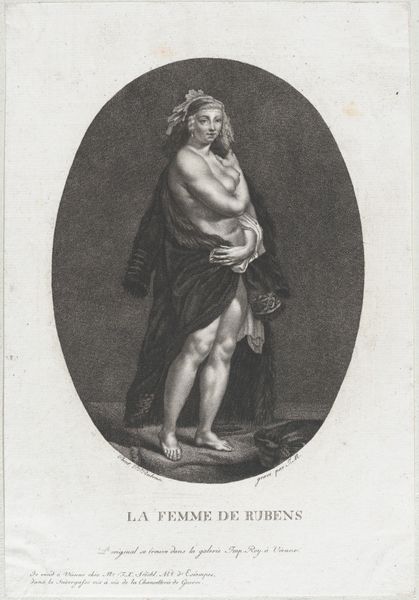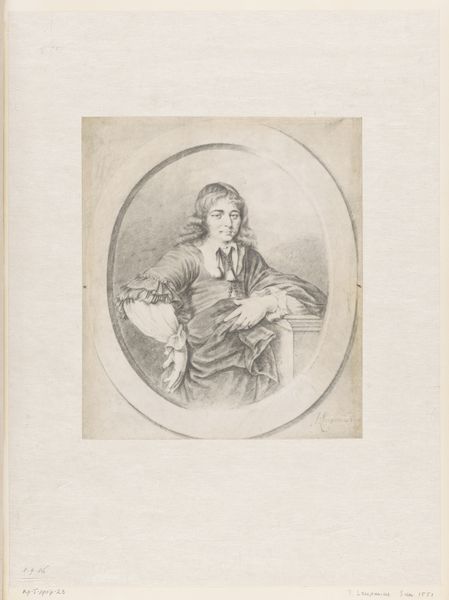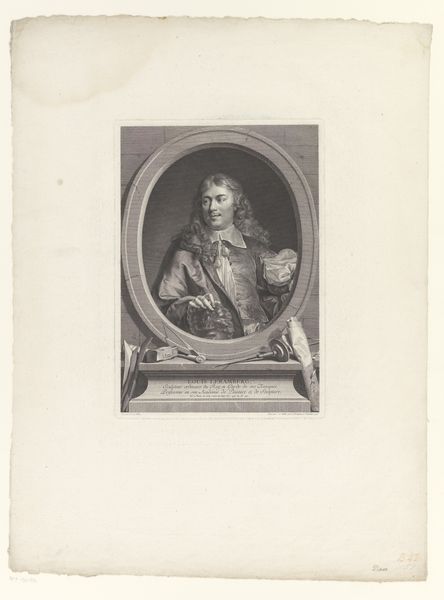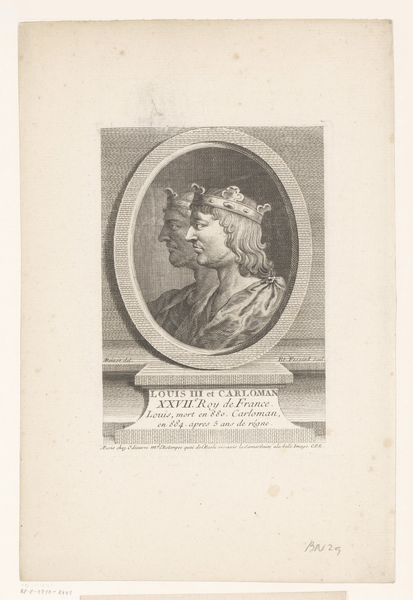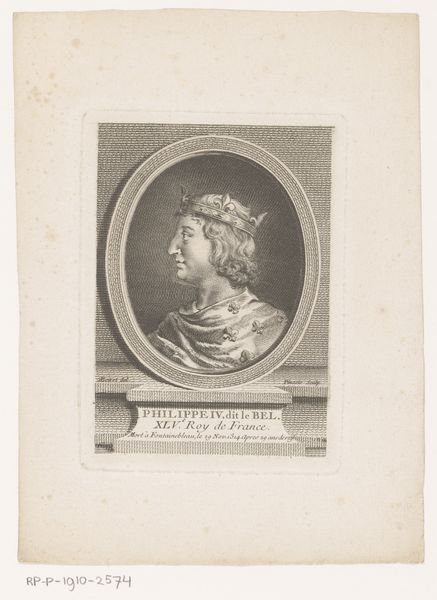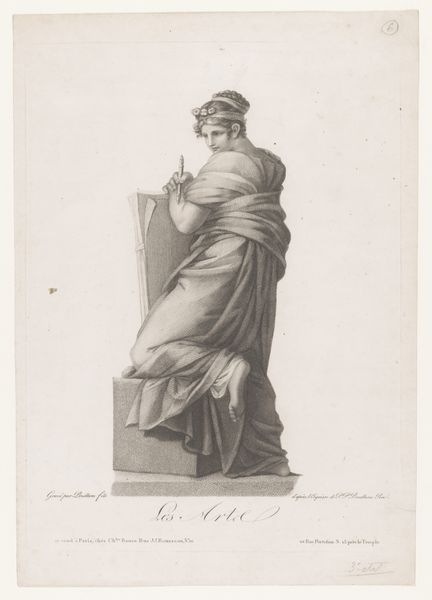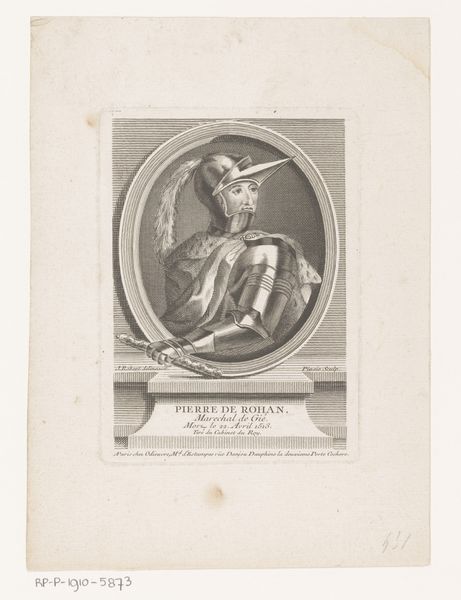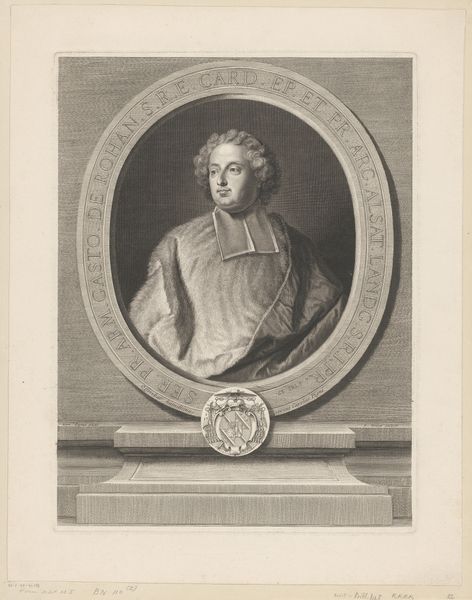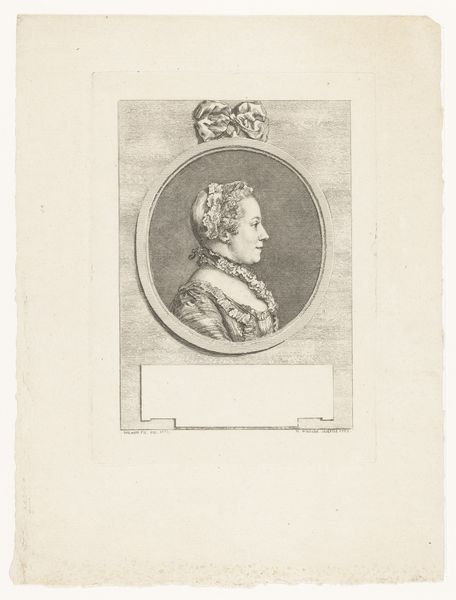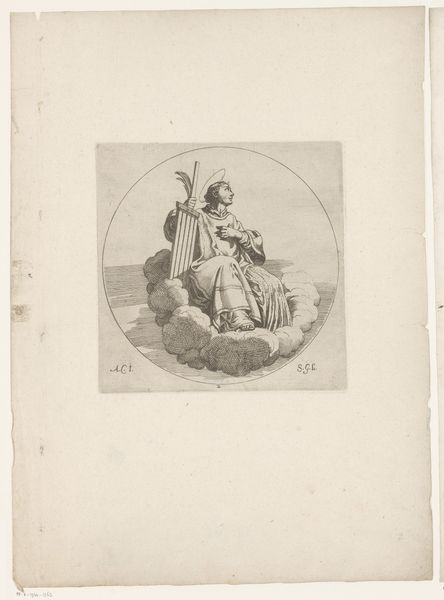
drawing, print
#
drawing
#
neoclacissism
#
allegory
# print
#
landscape
#
figuration
#
history-painting
Dimensions: Image: 7 11/16 × 5 7/8 in. (19.5 × 15 cm) Sheet: 10 3/16 × 7 5/16 in. (25.8 × 18.5 cm)
Copyright: Public Domain
Curator: "La Liberté," from between 1789 and 1799, by Martin de Monchy, on view here at the Met. A print, simple but striking. What catches your eye? Editor: The broken chain. Immediately. That block she's standing on--its primary purpose has vanished. And, as I linger, her toes... They look oddly fragile perched on top of it. It creates a tension between strength and vulnerability. Curator: Absolutely. The artist uses that neoclassical restraint—the figure, so stoic and composed, is actually radiating a sense of contained power about to break free. You can sense a palpable desire in its making for freedom and self-determination. I'm curious about how you perceive the influence of neoclassical art here? Editor: In many ways it shows how the ideals of neoclassical aesthetics become tools to promote ideological interests. You know, if we zoom in here we can see some markings of labor on that chain. But more fascinating to me is the tension that these kinds of artworks show within its material constraints and accessibility. It circulated as a print. How can everyone own it if ownership means excluding other people? Curator: It makes me wonder about the relationship to that Roman virtue it’s trying to conjure, which gets twisted and remade for very different purposes in this period. This liberty seems hard-won and deliberately chosen. Editor: I see those kinds of aesthetic choices like an act of historical recuperation. And thinking about the consumption of this type of printed material also gets us closer to the relationship to commodity fetishism. "La Liberté" sold...as an idea. It embodies a kind of paradox! Curator: That's true! And maybe that’s what the image continues to communicate: a complex interplay between individual agency and historical forces. It invites me to rethink liberation not as a static state but a continuous and, at times, contradictory process. Editor: Thinking of those competing needs, of that push and pull you're talking about...it helps ground this particular symbol of "La Liberté" in its fraught and complicated moment.
Comments
No comments
Be the first to comment and join the conversation on the ultimate creative platform.
